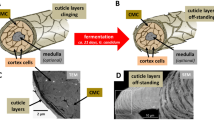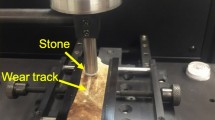Abstract
BANDED flints have long been known to occur in small numbers together with ordinary flints, which are the nodules of chalcedonic silica found in the chalk (Upper Cretaceous) of England and elsewhere. The bands may be observed on fractured surfaces and show up as a variation in colour within the normal colour range of unbanded flints. The exterior of the affected nodule may be ridged in a pattern conformable to the banding.
This is a preview of subscription content, access via your institution
Access options
Subscribe to this journal
Receive 51 print issues and online access
$199.00 per year
only $3.90 per issue
Buy this article
- Purchase on Springer Link
- Instant access to full article PDF
Prices may be subject to local taxes which are calculated during checkout
Similar content being viewed by others
References
Woodward, S. P., Geol. Mag., 1, 145 (1864).
Sollas, W. J., in The Age of the Earth, 152 (1905).
Geinitz, E., Zentbl. Miner. Geol. Paläont, 282 (1912).
Gebhardt, F. A. M. W., Zeit. Naturwissen., 84, 326 (1913).
Cayeux, L., Roches Siliceuses, Mem. Carte Géol., 443 (1929).
Hetényi, M., J. App. Phys., 10, 295 (1939).
Green, H. W., Science, 157, 1444 (1967).
Author information
Authors and Affiliations
Rights and permissions
About this article
Cite this article
JOCELYN, J. Banded Flints. Nature 216, 781–782 (1967). https://doi.org/10.1038/216781b0
Received:
Issue Date:
DOI: https://doi.org/10.1038/216781b0
This article is cited by
-
Stress Patterns and Spheroidal Weathering
Nature Physical Science (1972)
-
Chalcedony and Sulphate Evaporite Deposits
Nature Physical Science (1971)
Comments
By submitting a comment you agree to abide by our Terms and Community Guidelines. If you find something abusive or that does not comply with our terms or guidelines please flag it as inappropriate.



